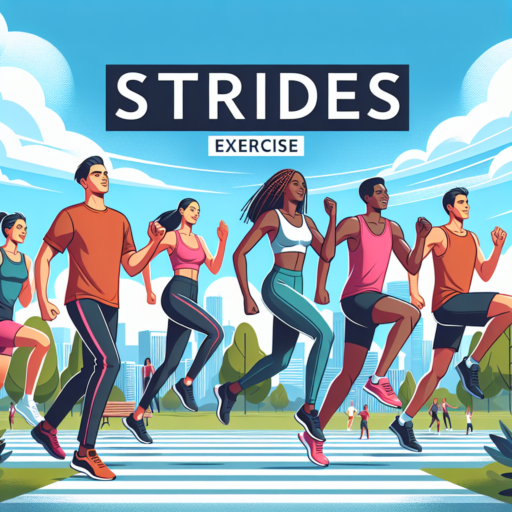What is a strides workout?
Understanding the essence of a strides workout is crucial for athletes and runners aiming to boost their speed and improve their running mechanics. Essentially, strides are a series of controlled sprints ranging from 50 to 200 meters, performed at a faster pace than your usual running speed. The primary goal is not just to quicken your pace, but also to enhance your running form and efficiency.
Strides are integrated into training programs as a form of speed work that doesn’t overly tax the body. Unlike rigorous sprinting sessions, a strides workout focuses on gradual acceleration, maintaining peak speed for a brief period, and smoothly decelerating. This method helps in promoting muscle memory for faster and more efficient running without the high risk of injury associated with all-out sprints.
Incorporating strides into your routine is relatively straightforward and can significantly benefit your running performance. Typically, these exercises are done after a moderate warm-up or at the end of a long run, serving both as a speed boost and a recovery tool. They provide a versatile workout that suits a wide range of objectives, from enhancing aerobic fitness to refining speed and agility for competitive runners.
When should you do strides?
Understanding the optimal timing for incorporating strides into your workout routine is crucial for enhancing performance and preventing injury. Strides, which are short bursts of running at a faster pace, are a highly effective method for improving your running form and speed. These can be integrated into your training in several ways, aligning with your fitness goals and current training schedule.
Before a Running Workout
Including strides before a more intense running workout serves as an excellent warm-up. Performing 4 to 6 strides of about 100 meters each can prepare your body for the session ahead. This approach helps to activate your muscles, increase your heart rate, and accustom your body to a faster pace before engaging in the main workout. Integrating strides at this time can significantly reduce the risk of injuries by ensuring that your body is well-prepared for high-intensity activities.
After an Easy Run
Executing strides after completing an easy run is another ideal timing. This method allows runners to focus on speed work without overstressing the body, as the muscles are already warm and more flexible. Sprinkling 4 to 6 strides after an easy run can sharpen your speed and improve your running economy, making it a strategic choice for days dedicated to recovery or light training.
No se han encontrado productos.
What’s the difference between fartlek and strides?
Understanding the distinction between fartlek training and strides is crucial for both seasoned runners and beginners aiming to improve their running performance and endurance. Despite both strategies being designed to enhance speed, their approaches and benefits have key differences worthy of attention.
Core Differences in Training Approach
Fartlek, a Swedish term meaning «speed play,» is a form of interval training that blends continuous running with speed bursts. It’s unstructured and varies in pace, allowing the runner to experiment with different speeds and recoveries. On the other hand, strides are structured short bursts of running, typically around 20-30 seconds, focused on maximizing speed and improving running form. They’re usually performed after a warm-up or at the end of a run, emphasizing quality over quantity.
Impact on Running Performance
The primary goal of fartlek training is to enhance a runner’s speed endurance—allowing them to maintain higher speeds over longer distances—while also improving mental toughness and flexibility in pacing strategies. Strides, however, aim to fine-tune running technique, increase leg turnover, and promote efficiency at high speeds. By incorporating both fartlek sessions and strides into a training regimen, runners can enjoy a comprehensive approach to developing speed, endurance, and efficient running form.
What is a stride in the gym?
In the realm of fitness and exercise, a stride refers to more than just a step forward. It encapsulates the full motion involved in walking, running, or sprinting, showcasing the combination of length and speed of a step. Especially in the gym setting, understanding and improving your stride can significantly impact your exercise efficiency, performance, and the prevention of injuries. Strides are often integral to both warm-ups and the main workout, helping to prepare the body for more intense exercise and improve running form.
Within the gym environment, focusing on your stride during treadmill workouts, track sessions, or even specific strength training exercises can aid in enhancing your overall fitness levels. It’s not solely about how far each step takes you, but also how effectively your body uses energy during these movements. Properly managed, strides can lead to better posture, greater leg strength, and improved endurance, ultimately making every workout more productive.
Moreover, incorporating stride-based exercises into your regime, such as lunges and high knees, can further refine the length and power of each step. These exercises focus on building strength and flexibility in the leg muscles and joints, essential components for developing a powerful stride. Whether you’re a seasoned athlete or a gym newbie, paying attention to your stride offers a comprehensive approach to improving your physical health and advancing your fitness journey.


